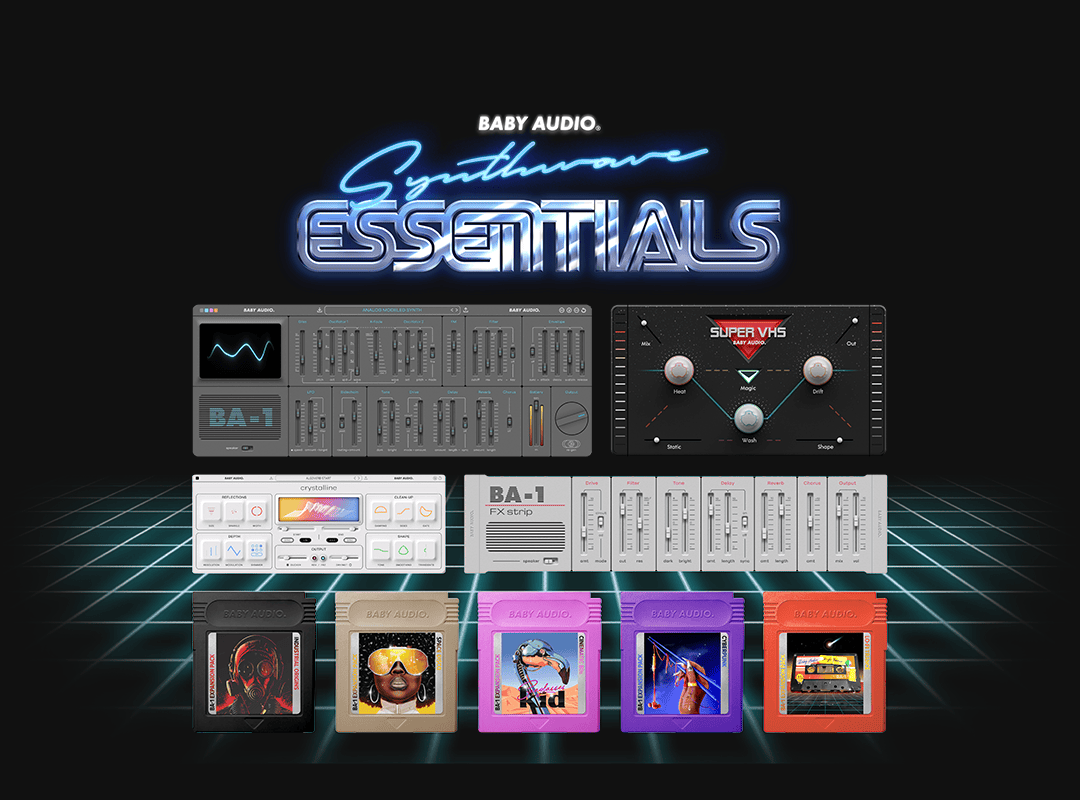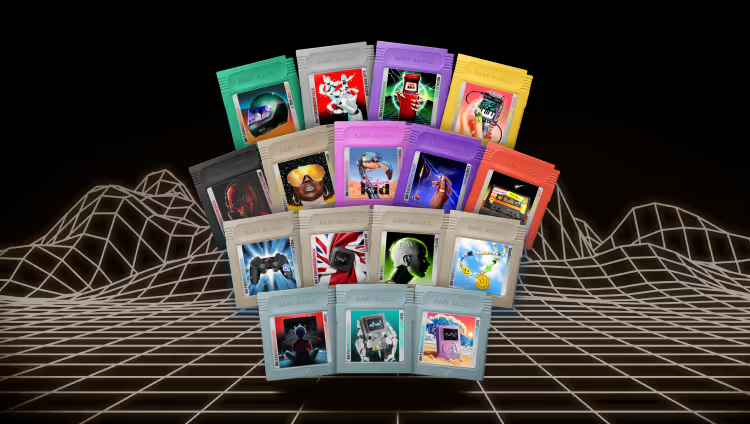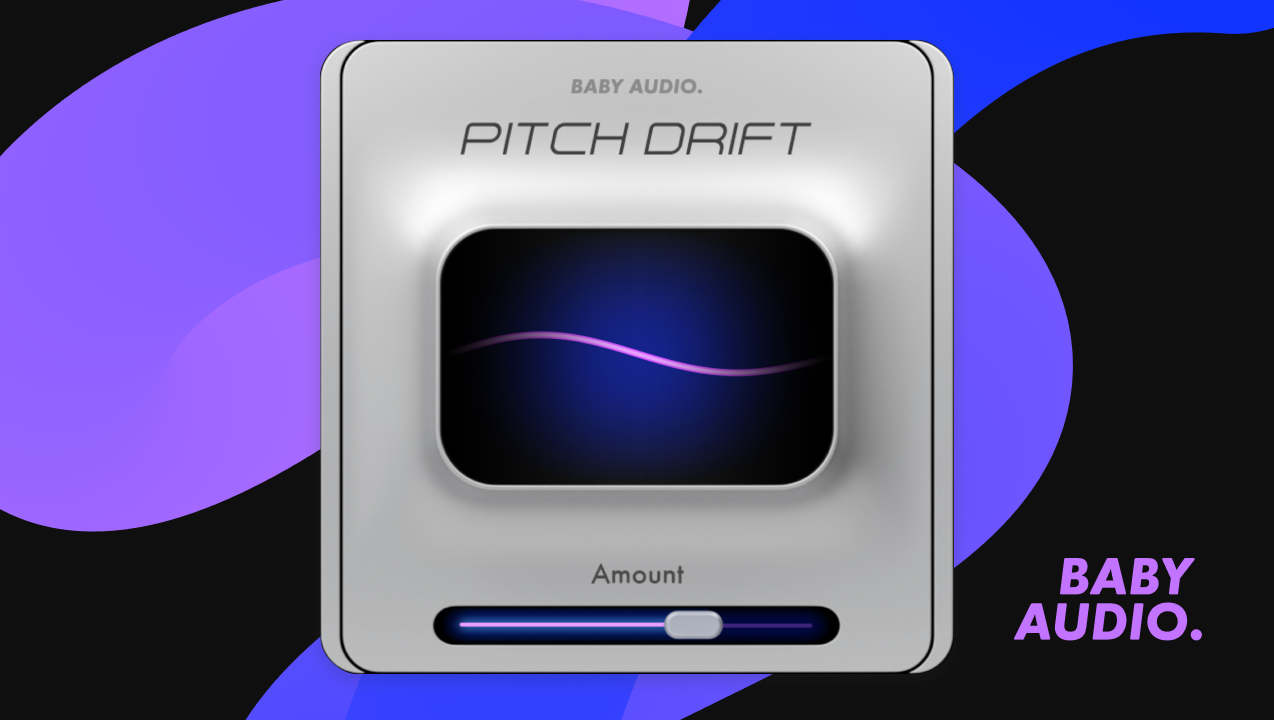How to Make Synthwave: 9 Tips for 80s-Inspired Tracks

Synthwave is a musical throwback to one of the most iconic decades in pop culture.
But it’s also a thriving modern genre with an active community of fans.
If you’ve ever heard its distinctive blend of glossy synths, retro drum machines and 80s pastiche, you might have wondered how to get started producing synthwave tracks.
Luckily, it’s possible to get an authentic 80s flavor in your productions if you know a few key techniques.
Of course, you’ll need more than just tips and tricks to master the genre, but this article will give you some basic ideas to get started.
Let’s dive in.
What is synthwave?
Synthwave is a genre of electronic music that draws inspiration from stylistic trends of the 1980s in music, cinema, games and design. It celebrates the unique aesthetics of the era with a nostalgic take on its core elements.
Synthwave developed in the mid 2000s among French house producers and grew in popularity with the rise of 80s-inspired media like the 2011 film Drive and Netflix’s Stranger Things.
Sometimes referred to as Outrun or retrowave, synthwave tracks often feature analog synths, lo-fi samples, gated reverb and other staples of 1980s electronic production.
Musically, synthwave leans toward the cinematic side of the era’s musical landscape, with a special reverence for the early electronic film scores of Vangelis, Tangerine Dream and John Carpenter.
9 production tips for synthwave music
To produce synthwave tracks, you’ll need a convincing palette of sounds and a keen ear for chords, melodies and beats that evoke the 1980s.
As daunting as it seems, getting the sounds themselves isn’t the hard part. Synthwave has gained enough popularity that there are many plugins available to help you get an authentic 80s-inspired sound.
If you’re looking to add synthwave sounds to your plugin folder, consider the Baby Audio Synthwave bundle for a greatest hits package of popular tools for the genre.

Now, here are 9 production elements you can try to capture the genre’s distinctive sound.
1. Repeating sequenced plucks with delay
Advanced hardware sequencers first started to appear in the early 80s.
Unlike the analog units of the original modular synthesis era, these sequencers were meant to program musical sequences of notes for other electronic instruments to play.
While it was still difficult to build full-scale arrangements with these tools, composers seized on their ability to generate hypnotic sequences that could repeat indefinitely as they manipulated their synths.
Combined with tempo-synced delay, these sequences could create an immersive atmosphere that was perfect for the gritty genre films of the era. Tangerine Dream’s Love on a Real Train is a perfect example of this trick in action.
Synthwave producers picked up on the technique, with many tracks including hypnotic looped sequences enhanced by delay.
Try experimenting with short sequences of synth plucks with dotted-eighth note delay to find patterns that can drive your track’s rhythmic pulse.
2. Lush analog pads
Another key feature of the 80s in music production was the introduction of affordable polyphonic synthesizers.
These made it possible for producers to create rich sustaining chords to serve as the backdrop for other elements of the track.
Synthwave relies heavily on lush and dreamy analog pads to set the stage for its late-night mood.
80s pads have an instantly recognizable sound, so consider an accurate vintage emulation if you don’t have a classic hardware unit in your studio.
BA-1 is based on one of the most popular beginner synths of the 80s. With the digital version, we added full polyphony and a second oscillator to turn it into a powerful vintage pad machine.
Check out Sunglasses Kid’s demo clip to hear BA-1’s pad capabilities in an 80s-style track.
3. Vintage-style drum machines
Drum machines began their takeover of pop music in the 1980s. But even the most high tech early machines were challenging to program and not nearly as sophisticated as modern plugins.
To keep it authentic to the era, most synthwave tracks feature simple drum patterns that wouldn’t sound out of place coming from a vintage rhythm box.
Speaking of which, if you're looking for a unique take on the analog-style sounds of the early era of drum machines, our latest plugin Tekno is perfect for vintage-inspired sounds that work in modern tracks.
Try the factory presets like MNML SGNL's TK-9 and TK-78 to get the vintage flavor of 80s drum machines without using static samples.
4. Arpeggiated octave bass
Many of the most popular 80s synths featured onboard arpeggiators.
Producers quickly realized that holding down a single bass note with the arpeggiator set to a 1 octave range would create a bouncing rhythmic octave effect.
You can hear it all over classic recordings from the 80s like in the verse bassline on Blue Monday by New Order.
BA-1’s built-in arpeggiator makes it easy to recreate this behavior without any additional MIDI effects.
Simply turn on the arpeggiator, set the octave range to +1 and hold down a note for instant 80s octave bass.
5. Vocoder vocals
Vocals can pose a challenge for electronic genres that evoke a specific mood with their sound palette.
The wrong vocalist can easily break listeners’ sense of immersion in the production.
One solution is to use a heavily processed vocal like the one found in Kavinsky’s classic early synthwave track Nightcall.
Humanoid is a great choice for classic vocoder-style sounds that can completely reshape a singer’s natural voice.
Its polyphonic MIDI mode means you can easily turn your vocals into a rich synthetic chord element in your arrangement.
Try this approach if you’re struggling to get vocals to sit right in your synthwave track.
7. Gated reverb
Gated reverb is another stylistic hallmark of the 1980s that’s been revived in synthwave production.
It adds characteristic punch and upper midrange density to percussion by abruptly cutting off the reverb decay.
Even if you already have a nice punchy snare, a little gated reverb can add even more 80s flavor.
Crystalline comes with a built-in gate function to turn any setting into a classic gated reverb.
It also comes with plenty of presets for 80s-style gated snares, toms and percussion.
8. Sidechain compression
One modern element in synthwave production is the extensive use of ducking sidechain compression.
It’s usually implemented so that the sustained sounds like pads and bass move out of the way for the kick drum pulse.
You can create sidechain ducking with any compressor in your plugin folder, but both BA-1 and Crystalline come with a built-in sidechain function so that no setup is required.
Simply turn up the sidechain amount to get an internal 4/4 ducking effect linked to your track’s tempo.
9. Lo-fi
If there’s one defining aspect of the 80s in music technology, it’s the limited fidelity of the equipment available at the time.
While pro recording gear was capable of impressive results, the final listening medium could be vinyl, cassette, analog radio or quirky formats like 8-track and VHS audio.
These all brought various flavors of analog saturation, warbling wow and flutter, especially as they decayed over the decades.
Most synthwave productions have some way of augmenting the lo-fi qualities.
While there are plenty of plugin options out there for lo-fi, Super VHS offers a unique approach that emulates the specific qualities of VHS audio.
Check out how Super VHS can enhance everything from percussion to synths in your mix.
Under neon lights
The best synthwave tracks create an irresistible nostalgia for a unique period in pop culture.
But many of the production techniques to make it are modern processes in a DAW-based workflow.
If you’ve made it through this article, you’ll have great start for creating your own synthwave songs.
Artist-approved presets for BA-1
BA-1 is an analog chameleon capabale of capturing many of the most iconic synth tones from across music history. Explore the expanding library of custom presets created by some of the best artists and sound designers in the game. From chiptune to lo-fi to cyberpunk, these genre-themed expansion packs make BA-1 your go-to synth for authentic vintage tone.




.png)




